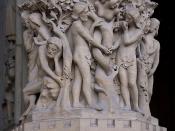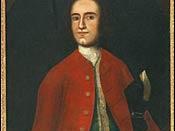Compare how the poets write about the emotions of bitterness and hatred. You should explore how they:
* Use language, image and form
* Create Distinctive characters for the speakers
Each poem has a character known as "the speaker", the one who is supposedly writing the poem. Both of the poets for "The Soliloquy of the Spanish Cloister" and "The poison Tree" have their speakers expressing their hatred and bitterness in different forms. In the Soliloquy of the Spanish Cloister the speaker's hatred takes the form of envy. The speaker envies Brother Lawrence who is supposed to be a fellow monk of his and cannot express his bitterness and hatred through physical actions because he would be defying the law of God. His anger towards Brother Lawrence is converted into frustration as he feels Brother Lawrence is almost perfect - he tries to hide his jealousy by mocking Brother Lawrence: "What's the Latin name for "parsley"? What's the Greek name for Swine's Snout?"
The speaker's anger in The Poison Tree is shown differently.
We don't know the original source of the speaker's hatred and bitterness, but we know that it builds up over time - it is grown, bigger and bigger: "I watered it in fears, Night and morning with my tears: and I sunned it with smiles, and soft deceitful wiles". In the end, the greatness of his anger results in the death of his foe: "My foe outstretched beneath the tree".
The anger of the speakers is different, in the way that the speaker in The Poison Tree causes the death of someone to show his anger. Whereas in the other poem the speaker tries to make his foe (Brother Lawrence) sin and tries to be better than Brother Lawrence.
Another way that...
![[Portrait of Juan Tizol(?) and Lawrence Brown(?), Aquarium, New York, N.Y., ca. Nov. 1946] (LOC)](https://s.writework.com/uploads/7/77189/portrait-juan-tizol-and-lawrence-brown-aquarium-new-york-n-thumb.jpg)

